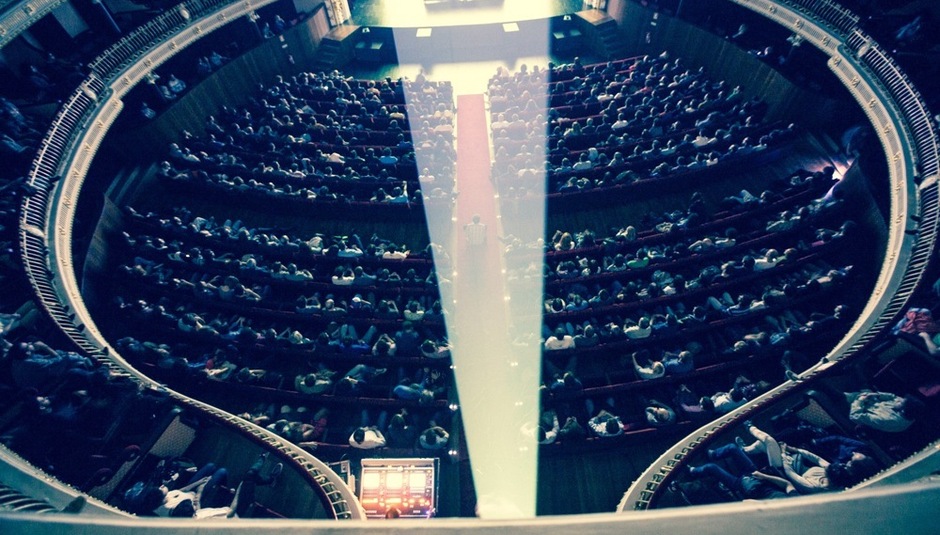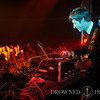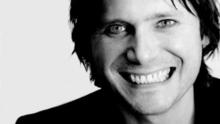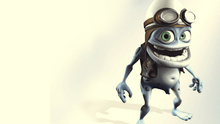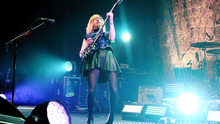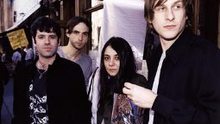Thirteen artists, some pioneers in their field, all critically lauded. It’s a bold move to hang the appeal of an international festival on such a narrow stratum of music but Portugal’s Semibreve, now in its fourth year, shows no sign of compromise.
If anything, the organisers have doubled down in their quest to give a platform to some of the most inventive, daring acts currently at work; there’s no equivalent to Forest Swords or The Haxan Cloak, two artists who gave 2013’s programme a more mainstream gloss. In fact, the most recognisable 'name' turns out to be the biggest disappointment, as we’re greeted on arrival with the news that due to illness, Karen Gwyer has pulled out, leaving a gaping hole in the opening night’s schedule that both the organisers and the other performers struggle to fill.
It’s a sad start to the event, not least because Semibreve is exactly the type of small, wonderfully curated boutique festival that’s the perfect antidote to the heavily branded, corporate money pits many gatherings have become (or use as a template), nothing more than #LadzBantz piss ups in anonymous fields. For a start, there’s the venue itself, the grand old Theatro Circo. Decked out in opulent red velvet, the ornate balustrades and glittering chandeliers demand a hushed reverence and sombre respect for the art on show. Then there’s the prices; a three-day pass is yours for just €25, an ice cold Super Bock a mere €1.20. Add in the ridiculously good value of the city’s many hostelries and you could enjoy a glorious long weekend here for less than a big night out in London.
It is, of course, a leap of faith to surrender oneself completely to such diverse, eclectic “music” – those inverted commas are not derogatory, merely symbolic of the fact that much of the programme challenges the notion of what music is, or can be – and outside hardcore disciples, no-one really know what to expect. This sense of adventure lies at the heart of Semibreve’s appeal, a journey into the sonic unknown on which there are bound to be casualties; several sets are marred by people leaving early, either overwhelmed or infuriated by the sounds ripping through the speakers. Preparation is largely futile, an exercise in advanced guesswork; aside from the participants’ recorded output being tricky to track down, at this end of the scale they’re not just concerned with blowing apart traditional notions of stagecraft, but the modern constructs – and limits – of “songs” and “tracks” themselves.
Gwyer herself recently told me she improvises around 70 percent of her show, and how she was planning to play an entirely new set. Recordings of the featured artists that can be sourced serve merely as a teaser, a jumping off point to more expansive ideas and playing with the limits of the material. It doesn’t always work – and when it doesn’t, the mess is pretty unpalatable – but as with anything that requires a little thought, the intrepid and the open minded can be richly rewarded.
Sometimes It’s Not The Journey But The Destination
Narrative, and the sense of a beginning, middle, and end telling a story, is a far more central concept to experimental electronica than you’d think. Consider the hypnotic heartbreak of William Basinski’s The Disintegration Loops, or Ben Frost’s violent, schizophrenic A U R O R A, which veers from the intense to the spacious. Take away the sense of a journey, or purpose, and listeners can feel lost, confused even; responses to Aphex Twin’s Drukqs ran from indifference to downright bafflement, even long-term admirers unable to get a grip on the experimental piano vignettes. Portuguese duo @C, filling in for Gwyer in the main auditorium, unfortunately fall into the latter category. Their set is highly experimental and, like most experiments, large parts fail to function as desired. Twiddling away in a cloud of dry ice, under a single, ominous cone of light, moments of quiet introspection – found recordings and Japanese harp – contrast with intrusive blasts of glitchy, industrial music. It’s deeply unsettling – like Child’s Play crossed with Blade Runner – and perplexing, the various bleeps failing to convey much in the way of meaning.
Thomas Ankersmit, billed as an installation artist as much as a musician, has a similar problem. Dealing almost exclusively in pure sound, his set comes closer than any other to existing outwith the realm of music – there’s no discernible structure to his performance whatsoever, a shrill, rumbling storm that tested the PA and people’s patience. Feedback and distortion feature heavily, but his manipulation of “infrasonic vibration, otoacoustic emissions, and highly directional projections of sound” leave me baffled and unmoved; many in the front row head for the exits, the gut-bothering bass frequencies apparently causing anxiety and nausea.
Sweden’s Roll the Dice head firmly in the opposite direction. With their backs to the audience, and giant, swirling visuals providing a mesmerising backdrop, their set feels like one long, thrilling ride alongside the Four Horsemen of the Apocalypse. Grand, sweeping waves of noise build incessantly to a climax that never comes, teasing out every drop of tension along the way. The highest peak in this gorgeous, gothic landscape is all ten minutes of ‘Assembly’; think of an orchestral Fuck Buttons scoring Nolan’s Batman trilogy, the rising strings closing slowly around your whole brain. It’s the weekend’s most exhilarating moment, and shows what’s possible when the avant-garde at least attempts to colour in between the lines.
What’s In A Name? Not A Lot…
Some last minute research was provided by the Quietus, courtesy of this fascinating Baker’s Dozen. Mark Fell is renowned for his minimalist techno and an avowed expert on electro acoustic music – he’s also written several weighty essays on the topic of sound production and manipulation. He’s here to play the club night under his Sensate Focus guise, which draws upon his love of early Nineties New York house and techno, but Gwyer’s absence means he’s corralled into doing a solo set in the sparse, concrete bunker below the main auditorium. The techno he delivers is suitably pared down, full of his trademark stuttering time signatures, but it’s a frustrating listen. Much of the theories he plays with – you can get lost for days working through everything in this illuminating interview – seem to exist on a higher plane than my ears and brain can cope with.
patten, the mysterious producer signed to Warp, is another name whose set is eagerly anticipated. Over dinner, we ponder how the sharp edges and strange juxtapositions of his ESTOILE NAIANT EP will transfer to a live setting, and his set up – live guitar, custom video projections by Jane Eastlight, and a singer – suggests he’s out to impress. And there’s a lot to like; parts are engaging, and the guitar feels like a natural extension of what he’s attempting, not some tacked on gimmick. But the jarring, off-kilter rhythms – one song threatens to explode with a killer beat, before settling into a jagged time signature – soon start to grate, and while he strives to push the music higher and higher, it’s dragged down by the crushing monotone delivery of his vocal companion. Sterile and verging on the spoken word, it’s almost indistinguishable beneath the music – none of us can work out exactly what she’s singing. Maybe that’s the point. But it adds nothing, and makes the hour in their company much harder to bear than expected.
Thom Yorke Has Much To Learn
'Can Thom Yorke do that? Can he fuck!' It’s Sunday evening, beer has been replaced by bottled water and espresso, and there are just two acts left. The jaded among us are forgiven for rolling their eyes at the attendant description of what Japanese wunderkind Ryoichi Kurokawa has in store for us, to wit:
'An audiovisual concert “syn” which is composed of diptych and 2.1ch sound. This is a new version of the concert piece “cm: av-c” which is my concert piece of nine years ago. I took over main direction and concept from it rather than to get new inspiration. It’s to provide a synesthetic experience in a very simple way. “SYN” is the prefix means “together”, “with” or “integrate” in Greek, as you see the words such as “synthesis”, “synchronization”, and “syneathesia”, e.t.c. This work is to stimulate directly and to make you feel simultaneously with the eyes and ears.'
Right then. But we’re soon blown out of our seats. He takes us on a roller coaster through hell, with death, decay, and the ugly side of nature resplendently rendered in eye-popping, retina searing high definition; it’s like watching The Ring on LSD, with a pounding techno soundtrack. It’s uncomfortable but addictive, and it swoops and soars through various stages of terror, joy, and sheer noise. It makes Tomorrow’s Modern Boxes sound like One Direction and, after a stunned, ten-second pause when the lights come on, prompts the above outburst from an esteemed colleague.
Kurokawa grasps that even if you want to challenge your audience, at some level you also have to entertain – it is, after all, a performance. This idea is also present in Plaid’s set, the closing act and only the second time we see a 'real' instrument – guitar again – all weekend. Making full use of the high definition, digital backdrop, they seem intent on taking us to a collective happy place, the polar opposite of Kurokawa’s shock and awe. One track, ‘Hawkmoth’, is particularly beguiling, a voodoo calypso electro that scans like Yorke DJ-ing on a Trinidad beach, high on Valium and several rums in. The blissful, Balearic vibe is a sweet note to end on, and we drift out into the cool night with much to ponder. Semibreve continues to impress and confound, and as an immersive experience, it tickles places other festivals can only dream of reaching.

